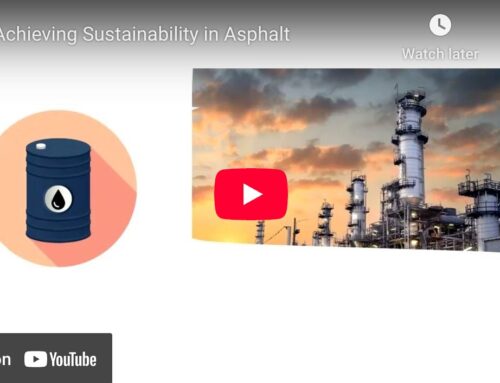
Increasing demand for roadway construction and repair to support infrastructure in a more connected global economy is directly impacting the bitumen industry. The market is projected to grow at 4% CAGR by 2031, a rate tied to urbanization and increased availability of more sustainable practices for producing roadways that use the binder. However, those tasked with working with the material during mix design planning, plant operations, and construction projects have found bitumen quality is much less reliable than it was decades ago.
3 Main Causes of Variable Bitumen Quality
Quality issues with bitumen have arisen primarily from changes to how the binder is sourced and how it is produced.
To start with, bitumen is no longer sourced locally from single supplier relationships with plants that require the binder for mix formulation. Consolidation among bitumen producers has reduced the number of companies with access to reserves. Additionally, countries such as Australia and South Africa, where domestic production is lagging or insufficient to meet demand, are facing the challenge of importing bitumen that meets quality standards without breaking the bank. Sourcing bitumen from global suppliers opens the door to variations in bitumen characteristics.
Compounding this difficulty is the quality of the bitumen provided by these producers. Bitumen is a byproduct of the crude oil refining process. Crude oil extracted from underground reserves is brought to refineries to be fractionated, or extracted into different fractions based on different boiling points. As resources such as gasoline, kerosine, and lubricating oils are removed through distillation, the leftover material is bitumen.
However, modern refineries have coker technologies that enable them to extract the maximum amount of useful( profitable?)material, leaving the bitumen to have variable quality. Refineries are also leveraging block running, synthetic crude slates, and shale oils, all of which can produce differing qualities of bitumen. Bitumen is no longer an important byproduct of the refining process for refineries, leaving them to no longer concentrate on its quality.
Add to this the fact that locales that rely heavily on bitumen imports may not receive bitumen from consistent sources or refineries. The result is an intake of different bitumen grades that can quickly follow one another, producing asphalt mixes that vary greatly in quality and both chemical and physical properties. Notably, sourcing bitumen from different sources can change the functional characteristics of the binder.
Overcoming Bitumen Quality Issues for High-Performing Asphalt Mixes
For mix designers and asphalt plants, the challenge becomes how to surmount these changes in bitumen quality without reliance on the producers to accommodate requisite performance specifications. Fortunately, the asphalt industry has responded by developing several potential solutions to dealing with variable quality bitumen.
Bitumen modifiers are substances designed to enhance the functional properties of bitumen in an asphalt mix. A number of modifiers are on the market including crumb rubber, Styrene–butadiene–styrene copolymer (SBS), polyethylene (LDPE or HDPE), and sulfur. Adding these materials creates polymer modified bitumen (PMB) mix with the goal of adding strength, durability, and temperature endurance, among other features. Innovative products like PGXpand®, a bitumen-friendly polymeric additive, can also help improve viscosity, workability, and high temperature performance without impacting low temperature properties.
In addition to considering the use of modifiers or additives, mix designers can place their focus more on mix-targeted specifications rather than bitumen-only parameters. With bitumen grade a variable in today’s marketplace, engineers can benefit from considering a balanced mix design that focuses on performance testing of the final mix including binder, aggregate, modifiers, and additives. The benefit of this approach is that it allows for more flexible mix design while helping engineers meet the specifications set for them by departments of transportation and similar agencies. Rather than focusing on volumetric properties, various tests are performed to assess physical characteristics such as cracking, rutting resistance, and aging properties. Working with an additive like PGXpand can also help mix designers improve viscosity, low temperature performance, and compaction characteristics.
As the asphalt industry strives to provide solutions to the issue of bitumen quality, mix designers are looking toward comprehensive mix specifications rather than just binder specs. However, misinformation abounds in this fast-evolving space. Importantly, quality and performance, not quantity and price, should drive conversations with third-party suppliers when exploring options for bitumen additives. Instead, dosage efficient additives or modifiers can help achieve meaningful performance specifications that produce desired results while remaining cost effective.
The bitumen industry is expected to continue evolving as refining technologies become even more sophisticated. Plants and engineers must remain current with industry changes and improve their familiarity with the tools and tests needed to achieve desired mix outcomes, all in the face of trends such as sustainability in asphalt roadway development and implementation of digital technologies.
To learn more about Sripath’s own commitment to developing additive solutions like PGXpand to help the industry overcome bitumen quality challenges, email info@sripath.com.





